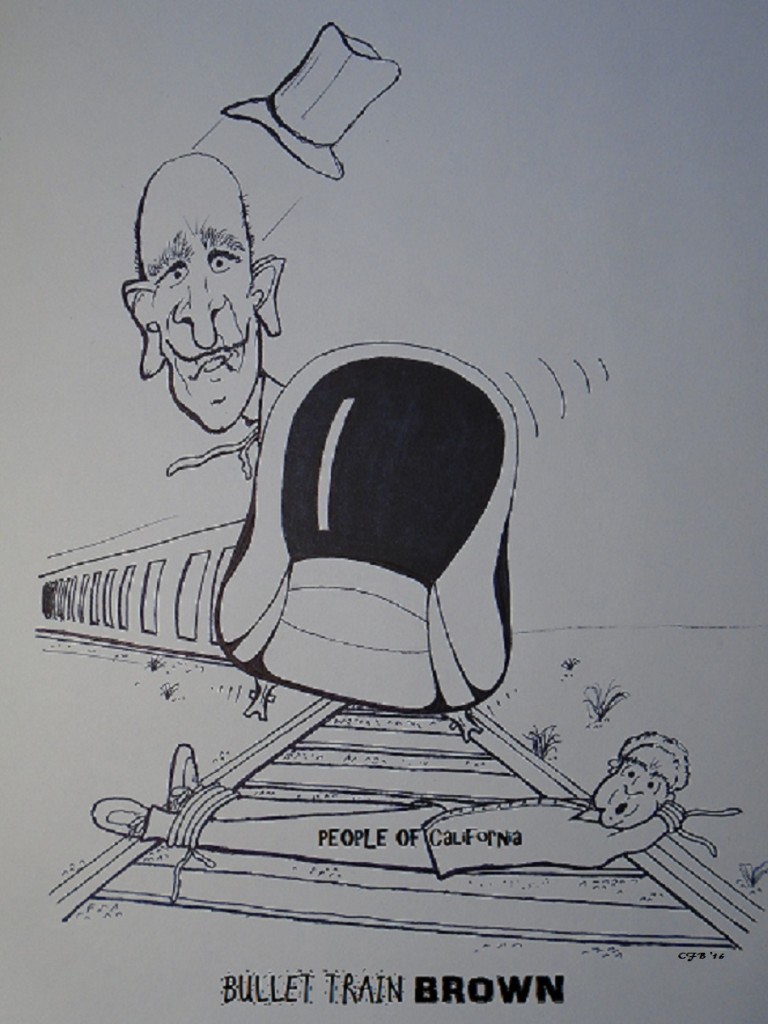The California High Speed Rail Authority just released the draft 2016 Business plan for the project.
The new plan is a complete revision and now proposes to build the Initial Operating Segment (IOS) from San Jose to about 8 miles north of Bakersfield. The previous business plans had proposed to build the IOS from Merced extending south to Burbank and on to Los Angeles Union Station.
The Authority’s press release for the plan talks about all the wonderful achievements this new plan will provide. What it doesn’t talk about is compliance with mandates and expectations that were embodied when the voters passed in 2008, Prop 1A.
The voters in 2008 were promised a High Speed Rail project that would connect San Francisco from the Trans Bay Terminal, going south to Los Angeles Union Station. Voters were told this would cost $32 billion. Voters were told it would take 2 hours and 40 minutes to make this trip. Voters were told it would be completed in 2020. Voterswere told the $9 billion in funding for the project from Prop 1A bonds would be all the California voters would ever be asked to contribute. Voters were told 117,000,000 annual trips would be served by the project.
The 2016 plan abandons all of these promises. The new plan starts at San Jose and extends south to about 8 miles short of Bakersfield. This much shortened route will cost about $27 billion. But California voters are being asked to pay for about $23 billion of this cost. Thus California voters are being asked to pay 2.5 times the original promise of $9 billion that would be provided by Prop 1A funds.
The service won’t start in 2020; no indeed, it is projected to start in 2025. At that time this new scheme will take a passenger who wants to go from SF to Los Angeles over 5 hours (CalTrain to San Jose, then HSR to Bakersfield, then bus to Los Angles)
Their overly optimistic ridership now says 2.2 million passengers per year, not 117,000,000.
Judge Kopp, former Chair and director of the Authority, as well as being labeled really the “father of California High Speed Rail”, issued a statement that puts this all into perspective:
“This project is nonexistent,” said Quentin Kopp, a former Superior Court judge, state legislator and a past chair of the high-speed rail authority board. “There is no private investment. So what they are doing is just whistling Dixie and somehow hoping the public can be fooled. It is over except for the waste of taxpayer money.”
Kopp said the project is a far different proposal today from what was called for in a successful 2008 ballot measure that provided more than $9 billion in bond funding for the project.
“What they have done in effect is destroy my intentions and those of the voters of California,” he said.
Pretty much says it all.


